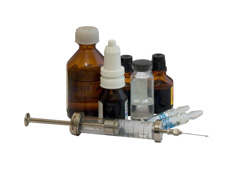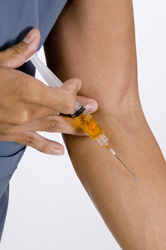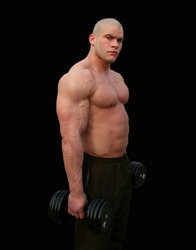Popular Links
- Steroid Use in High Schools
- Street Names for Steroids
- Talking To Your Child
- Steroid Statistics
- How Anabolic Steroids Work
- How to Spot a Steroid User
- Dangers of Steroid Abuse
- Pictures of Steroids
- Side Effects of Steroids
- Steroid Abuse in Sports
- Steroid Abuse Videos
- Steroid Facts
- Steroid Myths
- Steroid Testing
- Steroids and the Law
- Steroids and Women
- Testosterone Injection Videos
- The Ethical Aspect of Anabolic Steroids
- True Stories of Steroid Abuse
- Bodybuilding Steroids
- Coming Off Steroids
- Peer Pressure and Steroids
- Identify Anabolic Steroids
- Steroids 101
Steroid Resources
- Athletes and Steroids
- Best Legal Steroids
- Best Steroids
- Bodybuilders on Steroids
- British Dragon Steroids
- Cheap Steroids
- Cutting Steroids
- Deca Steroids
- Dianabol Cycle
- Dianabol Reviews
- Dianabol Steroids
- Effects of Steroids
- Fat Loss Steroids
- High Testosterone
- Horse Steroids
- Illegal Steroids
- Increase Testosterone
- Low Testosterone
- Mexican Steroids
- Muscle Building Steroids
- Natural Steroids
- Oral Steroids
- Performance Enhancing Drugs
- Prohormones
- Safe Steroids
- Steroid Cream
- Steroid Encyclopedia
- Steroid Injections
- Steroid Pictures
- Steroid Pills
- Steroid Side-Effects/Side-Effects of Steroids
- Steroid Stacks
- Steroid Tablets
- Steroid use
- Testerone
- Testosterone Injection
- Testosterone Replacement Therapy
- Women on Steroids
Steroid Profiles
STEROIDS 101 - History of Steroids
An Introduction to AAS
 Today’s culture makes it easy to forget that anabolic androgenic steroids (AAS) were actually developed for legitimate medical purposes, and not for physique and performance enhancement. This introduction will provide a comprehensive overview of AAS including information on its: discovery and evolution; basic forms and applications; contemporary terminology and abbreviations; abuse related definition and reasons; methods of acquisition; and many of the dangers surrounding purchase, purity, legal implications and side effects.
Today’s culture makes it easy to forget that anabolic androgenic steroids (AAS) were actually developed for legitimate medical purposes, and not for physique and performance enhancement. This introduction will provide a comprehensive overview of AAS including information on its: discovery and evolution; basic forms and applications; contemporary terminology and abbreviations; abuse related definition and reasons; methods of acquisition; and many of the dangers surrounding purchase, purity, legal implications and side effects.
Background
Puberty has always provided visual evidence of distinct changes from childhood to young adulthood. Unfortunately the mechanism within the male body responsible for this transformation was poorly understood. It was not until the 19th century that clinical experiments revealed a hormone within the testes which was the catalyst for these changes. Testosterone (aptly named after the testes) was discovered, isolated, and later synthesized. The 1930’s synthesizing of testosterone marked the invention of AAS, as we know them today. Since then literally hundreds of different forms have been catalogued, while far fewer numbers were commercially produced.
Shortly after development, AAS were adapted for a variety of purposes including the increase of aggression in Nazi soldiers, elite-level athletics in the1950’s, and the very specific production for weightlifting athletes. However, by the 1960’s several major sporting organizations had already banned their use, and initiated extensive drug testing policies. In the mid 1990’s, the first Anabolic Steroid Control Act was passed under President George Bush. A decade later congressional hearings were held to curtail the growing AAS problem in athletics. By this time, every major reputable sporting organization from the high school level through the professional ranks had followed suit with anti-AAS regulations and testing policies.
Types and Medical Applications
There are two basic forms of AAS, actual testosterone, and a chemically modified version it. By making simple chemical modifications to the basic testosterone molecule, an almost infinite variety of steroids have been created. In this way scientists are able to increase certain properties of the drug and decrease others.
 From a medical perspective, AAS are both naturally occurring (created within the body) and synthetic (created within the lab). In the human body these hormones promote cell growth and division which results in the development of muscle tissue, cartilage and bone. This is achieved through Anabolism which is the metabolic process of building larger molecules from smaller ones. Although AAS were first developed to treat male hypogonadism (a deficiency in the hormone testosterone), since inception they have been found useful in the treatment of other various other conditions as well. Beyond simply being anabolic they possess many physiological properties including the ability to increase protein synthesis, muscle mass, strength, appetite, and bone growth. Numerous wasting diseases such as Cancer, HIV, AIDS, and others have been successfully combated through AAS administration. This is possible primarily through testosterone’s unique ability to reverse the wasting mechanism, and permit sufficient maintenance and increase in bodyweight. The most recent medically approved use of AAS is for treatment of a condition known as ‘Andropause’, the decline of androgen levels in older men. This condition is similar to ‘Menopause’, the lowering of estrogen in women, and is typically treated by testosterone administration.
From a medical perspective, AAS are both naturally occurring (created within the body) and synthetic (created within the lab). In the human body these hormones promote cell growth and division which results in the development of muscle tissue, cartilage and bone. This is achieved through Anabolism which is the metabolic process of building larger molecules from smaller ones. Although AAS were first developed to treat male hypogonadism (a deficiency in the hormone testosterone), since inception they have been found useful in the treatment of other various other conditions as well. Beyond simply being anabolic they possess many physiological properties including the ability to increase protein synthesis, muscle mass, strength, appetite, and bone growth. Numerous wasting diseases such as Cancer, HIV, AIDS, and others have been successfully combated through AAS administration. This is possible primarily through testosterone’s unique ability to reverse the wasting mechanism, and permit sufficient maintenance and increase in bodyweight. The most recent medically approved use of AAS is for treatment of a condition known as ‘Andropause’, the decline of androgen levels in older men. This condition is similar to ‘Menopause’, the lowering of estrogen in women, and is typically treated by testosterone administration.
Although used to treat medical conditions, AAS are still very powerful drugs. As such, they possess a wide range of possible side effects including but not limited to: deleterious effects on cholesterol (either an increase in LDL, decreased HDL levels, or both); acne; elevated blood pressure; alterations in cardiac (heart) tissue; increased growth of body hair; increased aggression; loss of hair on the scalp including Male Pattern Baldness; and possibly the stunting of growth (vertically and developmentally) in adolescents. As indicated above, AAS medical use should be closely supervised by a physician.
Forms of Administration
- Intramuscular Injection: This injection is deep within the muscle, typically the buttocks. Although there are stigmas associated with injectable AAS, this form is much safer than the oral versions.
- Oral Administration: Several steroids are available in tablet, capsule and liquid (often black market) form for use orally. Typically oral AAS require an alteration to the base molecule in order to survive passing through the liver. This causes elevated liver enzymes, which increase the organ’s toxicity.
- Transdermal Administration: Some AAS are available as creams, gels, or patches. They are absorbed through the skin, and are rubbed on directly as one would apply a lotion. This type of administration is generally used during hormone replacement therapy, as it provides the most constant rate of release into the bloodstream.
- *Subcutaneous Injection: Human Growth Hormone and other related compounds are applied by injection under the skin. This requires pulling the skin away from the muscle and injecting in the pocket of air that is formed.
Steroid Abuse
Abuse is often defined as the inability to refrain from using or participating in something that is dangerous to one’s health or well being. Though AAS abuse is often accompanied by psychological dependence, and a myriad of physical and physiological harm, it is typically defined as any non-prescribed usage.
- Research indicates that cosmetic purposes represent the primary reason for the abuse of AAS. Social pressure to achieve an unrealistic body type has been cited as the main offender. This is closely related to the psychological disorders responsible for Anorexia and Bulimia.
- Nearly 80% of all AAS users do not participate in competitive sports or bodybuilding.
- In the world of competitive athletics, bodybuilding is the biggest offender with regards to steroid abuse. A virtually non-existent drug testing protocol combined with widespread acceptance of AAS abuse within the sport makes bodybuilding a haven for steroid use at all levels.
- It was previously thought that abuse was mostly limited to bodybuilders, muscle building enthusiasts, and various professional athletes. It is now known that abuse is far more widespread. At the time of this writing AAS have found their way into nearly every professional and amateur sport, many of which have instituted their own doping policies.
- In the professional ranks these drugs are often abused in order to gain a competitive edge on other athletes, and to help recover more quickly from training sessions and injury.
- Males between the ages of 19 and 40 are the most common abusers of AAS.
- The National Institute on Drug Abuse (NIDA) recently estimated that over half of a million 8th through 10th grade students are abusing AAS, and that many high school seniors do not believe their use constitutes a health risk. In another study NIDA found that 1,084,000 Americans, or 0.5% of the adult population, admitted to using AAS.
Industry Jargon
- Cycle: A period of steroid use often 8 or more weeks in length, followed by a similar period of disuse. This is known as cycling on and off AAS.
- Pyramiding: This is when users build up to their heaviest dose on a cycle. Though prevalent in the early days of steroid use, this method was found unnecessary and is virtually no longer practiced.
- Stacking: The process of combining drugs, or using more than one drug within a cycle.
- Tapering: This is the opposite of Pyramiding. Users begin with their highest dose and gradually decrease in an effort to minimize the side effects associated with coming off. As with pyramiding, this method is obsolete.
- Pin or Dart: These are needles used with syringes for injection.
- UG or UGL: Underground Labs, or clandestine laboratories that produce AAS.
- Gear, Juice, Vitamin S: AAS
- Test: Testosterone
- Deca: This is a slang name for Nandrolone Decanoate, which was originally sold under the trade name Deca-Durablin.
- D-bol: This is a slang name for Methandrostenolone, which was originally sold under the trade name Dianabol.
- A-bombs: This is a slang name for Oxymetholone, which was originally sold under the trade name Anadrol.
- Var: This is a slang name for Oxandrolone, which was originally sold under the trade name Anavar.
- Winny/Winnie: This is a slang name for Stanozolol, which was originally sold under the trade name Winstrol.
- EQ: This is a slang name for a veterinary drug called Boldenone Undeclynate, originally sold under the trade name Equipoise.
- AAS: Anabolic Androgenic Steroids, this is the medically accepted abbreviation for steroids.
- Tren: This is a slang name for any form of the drug “Trenbolone” which is available in several forms.
- Clen: Clenbuterol is not an anabolic steroid. It is a prescription asthma medication that if used in high enough doses increases the metabolic rate, thus reducing body fat.
How are steroids obtained?
In the past AAS were obtained via face-to-face deals conducted with drug traffickers known as ‘sources’, and often took place in gym parking lots and locker rooms. People seeking to resell them for profit purchased and transported most of these compounds from Mexico into the United States. In a covert sting operation, the BALCO scandal of 2003 exposed the nationwide involvement of many coaches who provided AAS to their players. Recently, and hopefully reducing this route of access, a new law was passed levying extremely harsh sentencing guidelines for coaches who distribute AAS to athletes in their care.
Today the internet serves as the primary source for obtaining AAS. Though gym sources still exist, the web makes them readily available to anyone capable of logging on and arranging payment. Lastly, although it seemingly defies the traditional definition of abuse, another method employed to obtain AAS is through a prescription. Because there are a myriad of legitimate uses, some physicians actually write prescriptions for amounts well in excess of therapeutic purposes and circulate them throughout the bodybuilding community.
The Black Market
 The ‘Black Market’ (BM) is the illegal underground production and sells of goods and services. Since the 2004 Anabolic Steroid Control Act placed AAS on the controlled substances list, the BM has been flooded with them. However, there are a significant number of hazards associated with the purchase and usage of underground drugs.
The ‘Black Market’ (BM) is the illegal underground production and sells of goods and services. Since the 2004 Anabolic Steroid Control Act placed AAS on the controlled substances list, the BM has been flooded with them. However, there are a significant number of hazards associated with the purchase and usage of underground drugs.
The question of product integrity is always central in the minds of BM customers, “Can I purchase safe products from this source?” The virtually anonymity of internet sites coupled with traditionally high provider turnover rates has made answering this question even harder in today’s society. The BM is filled with “scammers”, individuals who simply set up shop to dupe customers out of money with no plan or intention of delivering on the promised AAS. These are actually the good guys, those who promote the once bitten syndrome and scare many would-be buyers/users away from further attempts at steroids. At least they have the decency (used lightly) to take your money and run. Numerous dealers run repackaging scams in which very cheap steroids are placed in expensive product labeling and sold at a premium. These less expensive forms of AAS produce greater side effects, which can be particularly dangerous to women who think they are buying a very mild steroid only to receive a significantly harsher product. Still others produce imposter or fake steroids, which are often bottles of vegetable oils labeled to look like AAS. Along the same lines are those manufactured under conditions that are far less sanitary than required by the FDA. All of the above hazards can lead to health problems ranging from minor such as abscesses and infections, to major like severe illness and death.
Last but certainly not least, are the legal ramification of obtaining AAS from the BM. Harsh sentencing guidelines and tough prosecution are often seen in the handling of AAS cases. But for all of its shortcomings and dangers the BM has persisted, sustained by word of mouth, repeat business and the seemingly methodical process of cleansing itself of would be scammers.
List of Anabolic Steroid Side effects:
Many androgens are capable of being metabolized into compounds which can interact with other steroid hormone receptors and by combining with estrogen, progesterone, and glucocorticoid receptors produce additional unwanted effects:
General
- Stunted growth
- Increased risk of HIV, Hepatitis
- Increased risk of Male Pattern Baldness
- Hypogonadism (shrinking of testicles, etc…)
- Increased risk of bodily hair growth
- Elevated blood pressure
- Elevated LDL Cholesterol (Bad Cholesterol)
- Lowered HDL Cholesterol (Good Cholesterol)
- Addiction
- Increased Aggression
- Enlargement of the Left Ventricle of the heart (which can cause cardiac issues)
- Liver Toxicity
- Edema, or water retention
- Increased risk of stroke
- Increased risk of Heart Attack
Male Side Effects
- Prostate Problems: Some AAS convert to Dihydrotestosterone or variants of that hormone, and can enlarge the prostate causing problems urinating or even prostate cancer.
- Testicular atrophy: Since AAS mimic the male hormone testosterone, the testicles can shrink as a result of their no longer being needed to produce the hormone.
- Gynecomastia: This female-like breast tissue development in males is caused when steroids aromatize, or convert into high levels of estrogen .
- Sexual Dysfunction: Some steroids can cause sexual dysfunction and temporary impotence.
- Reduced reproductive function: AAS can cause a reduction in sperm count, resulting in decreased ability to reproduce.
- Male Pattern Baldness: The genetically patterned loss of hair on the scalp caused by the AAS conversion into Dihydrotestosterone or its variants.
Female Side Effects
- Facial and Body hair increases
- Thinning of the hair on the scalp
- Deepening of the voice
- Clitoral Hypertrophy (an increase in the size of the clitoris)
- Menstrual cycle irregularity (leading to decreased reproductive function)
Adolescent Side Effects
Although any of the general side effects, and gender specific side effects can also happen in adolescents, there are also some side effects which their undeveloped bodies are more susceptible to.
- Certain AAS can stunt growth by prematurely stopping the lengthening of bone tissue and fusing growth plates. This causes a decrease in overall height, as total height potential goes unreached.
- An increased rate of bodily maturation. The final adult bodyweight and overall size can be achieved though the user is still too young.
- There is an increased risk of psychological problems due to the underdevelopment of various parts of the brain.

